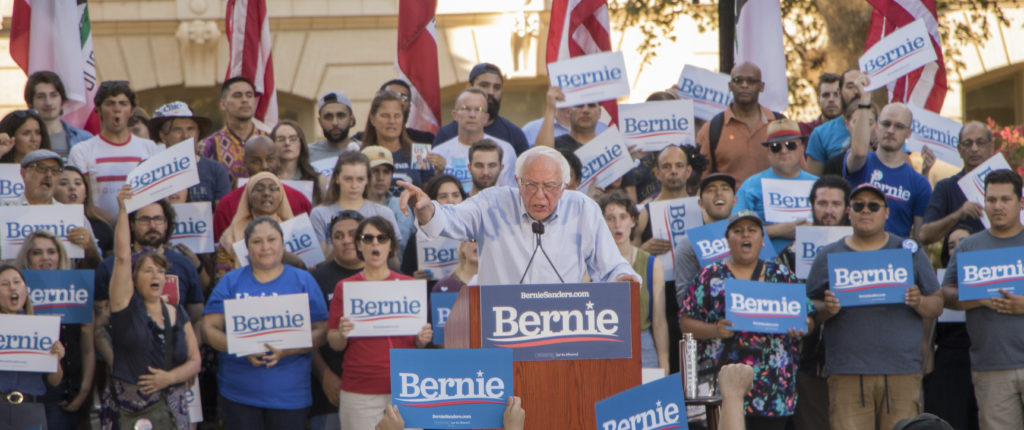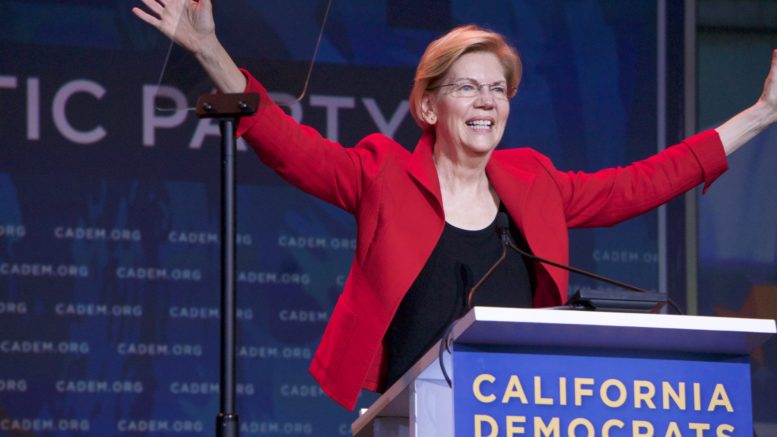Bernie Sanders and Elizabeth Warren seek to diversify their support
As Bernie Sanders and Elizabeth Warren compete to be the Democratic Party’s progressive standard bearer, they’re courting liberal white voters. But it may be their success among African Americans, Latinos and Asian Americans that turns out to be the deciding factor.
And if either wins the Democratic presidential nomination, they’ll need to build something close to Barack Obama’s diverse coalition in 2008 to defeat President Trump in 2020 (if he isn’t impeached and removed from office first).
So far, the nomination race is shaping up like many before it: Former Vice President Joe Biden has been leading in the moderate lane, thanks in part to strong support from nonwhite voters. Time is starting to run out for another moderate alternative—Pete Buttigieg, Kamala Harris, Amy Klobuchar—to rise up and challenge him.
Meanwhile, Warren is moving ahead of Sanders in the progressive lane. Sanders, the Vermont senator who finished second to Hillary Clinton in 2016, has slipped to third in most national polls, but is faring better among voters of color.
Warren, the Massachusetts senator, has surged in national polls because she is starting to break out of her base of college-educated whites. But to win the nomination she needs to convince more nonwhite voters.
That bid to diversify support might not be decisive right away: The electorates in the first two nominating contests—the Feb. 3 Iowa caucuses and Feb. 11 New Hampshire primary—are overwhelmingly white. But the voting pool becomes far more diverse with the Nevada caucus on Feb. 22, the South Carolina primary on Feb. 29 and especially on March 3, when California and 13 other states hold primaries.
The most recent Public Policy Institute of California poll found a three-way race in the state among likely Democratic and Democratic-leaning voters overall: Warren with 23%, Biden with 22% and Sanders with 21%.
Warren had a huge lead among white voters with 34%, compared to 19% for Biden and 9% for Sanders. But Sanders had a big edge among Latinos with 39%, while Biden had 21% and Warren only 5%.
And among African-American, Asian-American and other nonwhite voters, it was more evenly split: Sanders, 27%; Biden, 26% and Warren, 20%, according to the survey, released Oct. 2.
Reaching out
As the candidates prep for a Nov. 16 town hall with California Democrats in Long Beach and for their fifth debate on Nov. 20 in Georgia, the Sanders and Warren campaigns are ramping up efforts to diversify their support.
The Warren campaign highlights the hiring of a new national Latino outreach director, Warren’s meetings with various ethnic advocacy groups and her policy positions on immigration, the racial wealth gap, small business investment and her other plans to boost communities of color. The campaign also notes her endorsement from California Assemblywoman Lorena Gonzalez, chairwoman of the Latino Legislative Caucus, and points out that national campaign manager Roger Lau is the first Asian American to lead a major presidential run.
In California and nationally, the campaign is recruiting bilingual volunteers and holding “Warren Weekends” to train volunteer leaders in diverse neighborhoods, plus “Barnstorm” events to rally supporters in diverse areas.
“We’re building a campaign that is as diverse and inclusive as the value we are fighting for every day,” the campaign’s California state director, Nicole DeMont, said in a statement.
“We understand that historically and under this administration, immigrant communities and communities of color have been under attack,” added DeMont, who identifies as Latina. “We’re going to continue building out our efforts to reach out to communities of color about the issues that matter the most.”
Sanders, who acknowledges that his support base was too white and male in 2016, is making a more concerted effort to reach out to voters of color this time. In September, he held a town hall in Nevada focused on Latino issues and followed that up with three appearances at historically black colleges in the South. His campaign co-chairpersons are both women of color.

Leaders of the Sanders campaign in Sacramento met in July to discuss how to get people of color more involved as volunteers, as well as voters.
Karen Bernal, who is leading the outreach effort, says it’s not so much to correct a problem as it is to compete in the more crowded 2020 field of candidates. So the campaign is focusing on finding new voters, including recent immigrants.
“Sanders has done best when he expands the electorate,” said Bernal, who is immediate past chairperson of the state party’s progressive caucus and was co-chairperson of the Sanders delegation from California at the 2016 national convention.
Bernal also said that since Sanders appeals to working- and middle-class voters, a priority is working-class Latinas. “These are our people,” Bernal said.
Janeth Rodriguez, president of the Latino Democratic Club in Sacramento County, said she hasn’t seen that outreach yet as she weighs the merits of Sanders and Warren.
Rodriguez, 40, who works for a labor union, said she wants a nominee who is equipped for the job, has the same values she wants for the Democratic Party and who will stand up to Trump. All the Democrats should be bolder with their ideas and policies, including on immigration, she said. Bottom line, she’s still waiting to be inspired.
Adrian Mohammed, president of the Black Young Democrats club in Sacramento County, also said he’s still deciding between Sanders and Warren and hasn’t seen much targeted outreach to local African-American voters by either campaign.
Both candidates can continue appealing to diverse voters by talking about inequality and issues such as health care, said Mohammed, 28, a labor lobbyist.
One theme of the Democratic race so far is that candidates of color have yet to make much headway among voters of color, which helps explain why they’re still back in the pack.
For instance, in her home state, Harris was at only 8% in the PPIC poll and in single digits among voters of color—even with her six years as the first African American to serve as attorney general and nearly three years in the U.S. Senate. But her history in California may be part of her problem, Mohammed said, because African-American voters in particular don’t trust her to be progressive on police brutality and criminal justice reform.
Mohammed said he’ll ultimately pick between Sanders and Warren by doing a deep dive into their policies and positions.
“It’s all you can do,” he said.
These decisions by Mohammed, Rodriguez and other progressive voters will go a long way in deciding whether Sanders, Warren—or neither—emerge as the Democratic nominee.






Be the first to comment on "Hearts and minds"